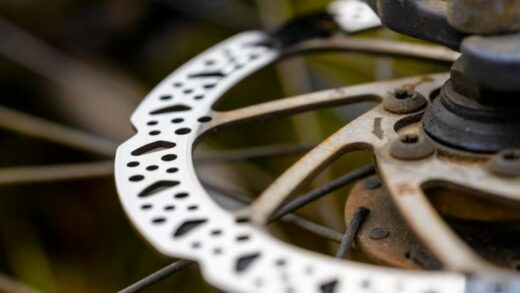Have you ever felt that adrenaline rush while cruising down a road on your bicycle? It’s the perfect blend of physical exertion and the thrill of speed. To enhance your cycling experience, it’s essential to choose the right gear ratio for your bike. This article will delve into the comparison between 10-speed and 11-speed bicycle gears, helping you make an informed decision that suits your riding style.
The Evolution of Bicycle Gears
In the world of cycling, innovation has led to the development of various gear systems. The transition from conventional to advanced gear ratios has significantly impacted riders’ performance. Let’s explore how 10-speed and 11-speed gears emerged and their impact on cycling.
The Power of 10-Speed Gears
10-Speed Gears: An Overview
10-speed gears marked a paradigm shift in cycling. These gears offer a wide range of options, enabling riders to conquer different terrains effortlessly. The setup comprises a cassette with ten sprockets at the rear wheel and a double or triple chainring at the front.
Benefits of 10-Speed Gears
- Versatility: With 10-speed gears, you have a diverse set of gear ratios at your disposal. From steep climbs to flat-out sprints, these gears adapt to various scenarios;
- Durability: The fewer sprockets on the cassette often result in increased durability and less wear on the components;
- Affordability: 10-speed gear systems are usually more budget-friendly, making them an excellent choice for entry-level riders.
The Superiority of 11-Speed Gears
11-Speed Gears: An Introduction
Just when you thought cycling gears couldn’t get better, along came the 11-speed gear systems. These setups took performance and precision to a whole new level, with eleven sprockets on the rear cassette.
Advantages of 11-Speed Gears
- Smaller Gear Steps: The additional gear offers finer adjustments, enabling a smoother transition between gears, optimizing efficiency;
- Enhanced Performance: The close gear ratios provide better cadence control, crucial for maintaining a steady pace and conserving energy;
- Lightweight Construction: Manufacturers have managed to maintain the weight despite the added gear, contributing to a lighter overall bike.
Comparing 10-Speed and 11-Speed Gears
| Aspects | 10-Speed Gears | 11-Speed Gears |
|---|---|---|
| Gear Range | Wide range of options | Slightly extended gear range |
| Gear Steps | Larger gaps between gears | Smaller, more consistent gear steps |
| Shifting Precision | Good, but can be less smooth | Exceptionally smooth shifting |
| Weight | Heavier cassette and components | Lightweight design |
| Compatibility | Compatible with many older components | Limited backward compatibility |
Making the Right Choice: Which Gear System Is for You?
Choosing between 10-speed and 11-speed gears depends on your cycling goals and preferences. If you’re a recreational rider seeking budget-friendly options and versatility, 10-speed gears might be your best bet. On the other hand, if you’re a competitive cyclist aiming for precision, smoother transitions, and enhanced performance, investing in 11-speed gears is a wise decision.

Exploring Gear Ratios: Finding Your Sweet Spot
Understanding Gear Ratios
Gear ratios play a crucial role in determining how much power and speed you can generate with each pedal stroke. In the context of 10-speed and 11-speed gears, it’s essential to grasp how gear ratios work and their impact on your cycling performance.
10-Speed Gear Ratios
10-speed gear systems often provide a wider range of gear ratios compared to their 11-speed counterparts. This versatility can be advantageous when tackling varied terrain, allowing you to find the perfect balance between power and speed.
11-Speed Gear Ratios
While 11-speed gears might offer a slightly narrower range, they excel in offering more closely spaced ratios. This results in a smoother transition between gears, optimizing your cadence and overall riding efficiency.
The Role of Shifting Mechanisms: Precision in Action
Shifting Mechanisms Unveiled
The efficiency of a gear system is heavily influenced by its shifting mechanisms. When comparing 10-speed and 11-speed gears, it’s worth exploring the technologies behind their shifting precision and how they contribute to your cycling experience.
10-Speed Shifting
10-speed shifting mechanisms, while effective, can sometimes exhibit a slight lag in smoothness due to the larger gaps between gear ratios. However, advancements in technology have significantly improved the shifting performance in recent years.
11-Speed Shifting
11-speed gears shine in the shifting department, boasting exceptionally smooth and quick transitions between gears. The closely spaced ratios and refined shifting mechanisms ensure minimal disruption to your pedal stroke, maintaining your momentum.
Weight Matters: Impact on Performance and Handling
Weight Considerations
The weight of your bicycle’s components can significantly influence your overall cycling experience. When comparing 10-speed and 11-speed gears, it’s essential to consider how the weight of the gear systems impacts your performance, especially during climbs and acceleration.
10-Speed Weight
10-speed gears may be slightly heavier due to the larger cassette and additional sprockets. While this might not be a major concern for casual riders, competitive cyclists might prefer the reduced weight of an 11-speed system.
11-Speed Weight
11-speed gears often manage to maintain a lightweight design despite the additional gear. This weight reduction contributes to better handling and acceleration, making them an appealing choice for riders who prioritize speed and responsiveness.
Cost Considerations: Balancing Performance and Budget
Financial Aspects
When making a decision between 10-speed and 11-speed gears, your budget is a crucial factor. Let’s dive into how the cost of these gear systems compares and whether the performance benefits justify the price difference.
10-Speed Costs
One of the advantages of 10-speed gears is their affordability. If you’re looking for a budget-friendly option that still offers decent performance and versatility, a 10-speed system might be the right choice for you.
11-Speed Costs
11-speed gears, being more advanced and offering enhanced performance, often come with a higher price tag. While they provide smoother shifting and better cadence control, you’ll need to weigh these benefits against the additional cost.
Conclusion
The debate between 10-speed and 11-speed bicycle gears boils down to personal preference and the type of cycling you enjoy. Both systems offer unique benefits, enhancing your overall riding experience. So, whether you’re a casual rider or a passionate cyclist, understanding the differences between these gear systems will empower you to choose the ideal one for your adventures.
Frequently Asked Questions
Absolutely! However, keep in mind that the upgrade might involve changing various components, such as the cassette, chain, and shifters, to ensure compatibility.
While 11-speed gears offer precise shifting and enhanced performance, beginners might find the learning curve steeper. 10-speed gears are generally more forgiving for newcomers.
Not necessarily. Both 10-speed and 11-speed gears require regular maintenance to ensure optimal performance and longevity.
One potential downside is the limited backward compatibility, as some older components might not work with 11-speed systems.
In most cases, yes.
However, it’s recommended to consult your local bike shop or manufacturer’s guidelines to ensure compatibility and optimal performance.






